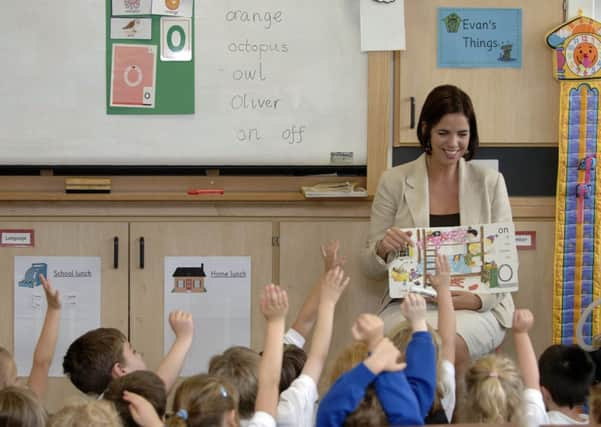Scottish teacher numbers hit ten-year low


Teaching numbers have slumped to a ten-year low, which has resulted in rising class sizes, despite a flagship Scottish Government pledge to maintain numbers.
Union leaders have branded the fall a “betrayal”, while new education secretary Angela Constance admitted the figures are “disappointing”.
Advertisement
Hide AdAdvertisement
Hide AdCouncil leaders say the declining teacher numbers are down to swingeing cuts which will see budgets reduced by hundreds of millions of pounds in the years ahead.
There are 254 fewer teachers in 2014 than last year and 3,425 more pupils, it emerged yesterday. This means there are 50,824 teachers in Scotland’s state schools – a fall of 4,275 since the SNP came to power in 2007.
Teaching unions last night called on the Scottish Government to intervene to reverse the decline. Larry Flanagan, general secretary of the Educational Institute of Scotland, said: “The agreement to maintain teacher numbers was designed to keep class sizes down to ensure a quality environment for pupils.
“This failure to even meet the target of maintaining teacher numbers is a worrying indicator of the way that class sizes will rise if councils continue to cut teachers.”
He added: “The fact that
CONNECT WITH THE SCOTSMAN
• Subscribe to our daily newsletter (requires registration) and get the latest news, sport and business headlines delivered to your inbox every morning
Scotland’s local authorities and Cosla [the Convention of Scottish Local Authorities] have failed to deliver their part of the agreement is a clear betrayal of teachers, pupils and parents across Scotland.”
Councils and the government have struck a deal to maintain the ratio of pupils to teachers at existing levels in order to keep down class sizes, but this went up from 13.5 to 13.6 this year. The primary school pupil-teacher ratio has increased in the last year from 16.5 to 16.7.
Ms Constance said: “It is clear that this rise has been outstripped by the increase in primary pupils. That has led to a small but disappointing overall increase in the pupil-teacher ratio. We are already in discussions with councils, through Cosla, on the way ahead and these figures will now form part of those talks.”
Advertisement
Hide AdAdvertisement
Hide AdIn 2007, the SNP promised to reduce class sizes for all P1-3 classes to 18 or fewer, but it was forced to abandon this vow two years later.
Labour education spokeswoman Kezia Dugdale said: “Their latest target of ensuring that just 20 per cent of those classes have 18 pupils or fewer has been an equally embarrassing failure. These figures now show that less than 13 per cent of classes meet that target.”
She added: “Our schools are creaking, our teachers are stressed, parents are anxious and pupils are suffering. Yet year after year the SNP sweep these issues under the carpet and pretend everything’s on the up.”
Councillor Douglas Chapman, Cosla’s education, children and young people spokesperson, said: “We recognise that even small changes in the ratio can represent people’s jobs but, at a time when the public sector remains under huge financial pressure, maintaining the pupil-teacher ratio at this level is once again a significant achievement by Scotland’s councils.”
Class sizes also vary depending on the part of the country. In East Lothian the rate is 15.2 pupils for every teacher, but for other mainland councils, such as Dumfries and Galloway, it is just 12.7.
SEE ALSO
SCOTSMAN TABLET AND IPHONE APPS